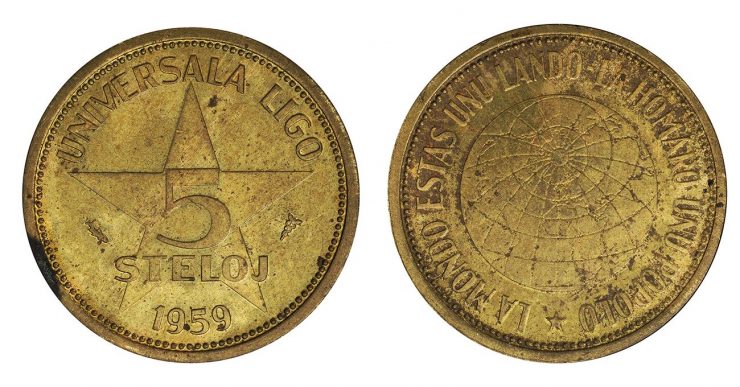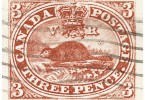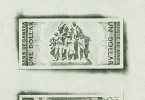Esperanto: universal language—universal coinage?
It should be no surprise to anybody that the people who promoted a universal language are the same people who attempted to create a universal currency. In the 1870s and ’80s, Dr. Ludovic Lazarus Zamenhof, an ophthalmologist from Bialystok, Poland, developed Esperanto, a language described as an “international auxiliary language” that would bridge cultures. Bialystok was an ethnically divided part of imperialist Russia, and Dr. Zamenhof grew up feeling that the enmity and conflict in his community were rooted in the differing languages of the various cultures there.
Esperanto very quickly developed a serious following. A textbook of Esperanto grammar appeared in 1887, and the first congress of Esperanto speakers was held in France in 1905. But after the First World War, Esperanto was viewed with suspicion by most of Europe’s burgeoning totalitarian regimes. Esperantists were often persecuted, expelled or even executed, but they still met in secret.
Esperanto is recognized in Google Translate: copy and paste the coin’s legend, LA MONDO ESTAS UNU LANDO – LA HOMARO UNU POPOLO, into it for the English translation. Universala Ligo, 5 steloj, coin, 1959 NCC 2007.043.001
Not until after the Second World War was an Esperanto movement openly revived, with the creation of a Dutch organization called the Universala Ligo (Universal League). The League’s mission was to unite mankind through the use of a common language. During the first international assembly of the Ligo in 1946, a decision was made to introduce a common world currency with an internationally stable value. The League’s hope was to achieve peace through international economics—that global conflicts caused by international economic pressures could be resolved by using this revolutionary currency. This noble task would fall upon the “stelo” (Esperanto for “star”) and its value was determined as 1 stelo = 1 standard loaf of bread, which at the time cost 0.25 Dutch guilders.
On the obverse (front face of the coin) is the founder of Esperanto, Dr. Ludovic Zamenhof. 10 steloj, Universala Ligo, Netherlands, 1959 NCC 2007.043.002
The Universal League emerged from a secret association of Esperanto speakers who met in the Netherlands during the Nazi occupation.
The first coins were minted in 1960. Through 1965, successive issues produced 1, 5, 10 and 25 steloj denominations. They actually circulated—but not with the support of any government. Steloj functioned for over 30 years as token coinage used to purchase books and other items within the Netherlands’ chapter of the Ligo. In 1974 the stelo was revalued at 0.50 Dutch guilders. With the hope of cushioning it from inflation, the stelo was later pegged to the consumer price index, a tool for measuring inflation based on the prices of basic consumer goods. But fierce internal disputes over how it should be valued brought about the demise of the currency. The Universala Ligo disbanded in 1993 and, in the late 1990s, the deaths of its greatest advocates ended any major Esperanto initiatives.
The Museum Blog
Museum Reconstruction - Part 3
By: Graham Iddon
Though naturally we are aware that the former Museum space is being gutted, the reality of seeing it empty is still pretty strange for most of us here. In the last blog of this series we showed you the empty cafeteria space that will become the new Museum, as well as some images of the old Museum as it was at the time: stuffed with odds and ends of exhibit cases, the occasional display still on the walls.
CENTimental Journey
By: Graham Iddon
With all the blogging we’ve been doing for Voices from the Engraver, you’d think we had nothing else on our exhibition plate. We do, actually, and it’s called CENTimental Journey. This temporary exhibition, hosted at the Canadian Museum of History, walks you through more than 150 years of the Canadian 1 cent piece.
Museum Reconstruction - Part 2
By: Graham Iddon
We are coming up on a year since we closed the doors on the physical museum. During that year, we’ve worked very hard to make sure everybody knows that we are still a functioning museum and one that will be opening its doors again in a few years on a beautiful new space, with an expanded mission and mandate.
Becoming a Collector III
By: Graham Iddon
For you as the steward of your collection, your aim is to preserve the items as best as you can by protecting them from further deterioration. The pros call this preservation.
The Adventure of Exhibit Planning IV
By: Graham Iddon
This exhibition is about engravers, production processes and the beauty of postage stamps and bank notes. In the previous episode of this series we talked about the process surrounding securing the bank notes for this exhibition and how it had to take into account both the needs of the exhibition team and the concerns of the collections department.
Becoming a Collector II
By: Graham Iddon
So now you’ve decided that collecting currency is far more fascinating than collecting 14th Century Flemish altar paintings and have begun to accumulate some items. Good for you, those paintings are a bother to dust and currency is far easier to take care of.
Becoming a Collector I
By: Graham Iddon
Collecting things is a very common human urge. Be they matchbooks, pop bottles or 17th century Flemish altar paintings, owning large numbers of the same type of thing is a fascinating pastime for many of us.
The Adventure of Exhibit Planning III
By: Graham Iddon
During the planning stages stamping the word ‘final’ on any given aspect of a travelling exhibition can seem less of a directive and more of an overly optimistic suggestion.
Notes from the Collection: Recent Acquisitions II
By: Paul S. Berry
This month’s selections highlight various areas of Collection development. These include what are called financial instruments: items such as stocks, bonds shares and other articles that represent a contract to deliver money in some manner.









